 |
 |
Our enthusiastic and extremely knowledgeable perennials team is here to answer your questions and help you choose the best perennials for your situation. There’s always something in bloom for sun, shade, butterflies, birds or deer resistance as well as a variety of bulbs for your space.
Stroll through our time-tested favorites and introduce yourself to the newest varieties. We garden with perennials too; we love them and it shows!
|
34 found, showing page 2 of 3
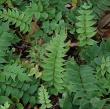
Arching, glossy, dark green fronds. Naturalizing. Evergreen. USDA 6-10
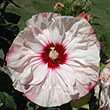
Striking variety with white, ruffled flowers that are accented with red and fuschia margins. USDA 4-9
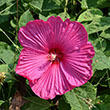
8" deep rose blooms with red eye. Compact. Tolerates wet sites. USDA 5-9
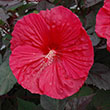
Vivid, magenta blooms in the summer. Dark, purple-tinged foliage accents bright flowers. USDA 4-9
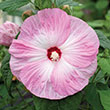
Ruffled white blooms are blushed with pink and centered with dark-red. USDA 4-9
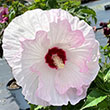
Large white ruffled flowers with a red center and blush pink edges. Upright, shrub-like. USDA 4-9
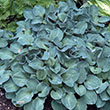
Small, green foliage and lavender flowers. Dwarf variety. Maintains a dense growth habit. USDA 3-8
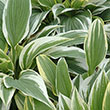
Medium green leaves with wavy, white margins and gray-green streaks. USDA 3-9
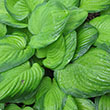
Bright & dark green foliage. Fragrant white blooms. USDA 3-8
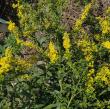
Arching stems and golden flowers. Wide soil tolerance. Dramatic addition to the garden. USDA 3-8
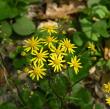
Upright central flowering stalks covered with yellow daisy-like blooms that open from purple buds. Basal foliage forms neat mounds of green heart-shaped leaves with purple undersides. Height 1-2'.
Senecio attracts bees and butterflies to the garden. Prefers average, medium to wet soils. Do not allow to dry out. Tolerates wet soils. Will self seed in the garden. Spreads by rhizomes to make the perfect groundcover.
- USDA Hardiness Zone(s): 3-8
- Exposure: Part Shade, Full Shade
- Bloom Time(s): May
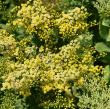
Yellow blooms. Upright foliage. Compact habit. Clump-Forming. USDA 5-8
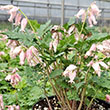
Cherry red heart shaped blooms. Grayish-green foliage. USDA 3-9
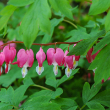
Height: 3 feet
Spacing: 30 inches
Sunlight: partial shade full shade
Hardiness Zone: 1b
Other Names: Old Fashioned Bleeding Heart
Description:
Bushy upright mounded selection features blue-green fern-like foliage and arching stems of heart shaped locket flowers with white protruding petals; excellent for shaded borders and beds; beautiful cut flower; goes into summer dormancy
Ornamental Features:
Common Bleeding Heart features delicate nodding pink heart-shaped flowers with white tips dangling from the stems from late spring to early summer. Its ferny compound leaves remain bluish-green in color throughout the season.
Landscape Attributes:
Common Bleeding Heart is an herbaceous perennial with a mounded form. Its relatively fine texture sets it apart from other garden plants with less refined foliage.
This plant will require occasional maintenance and upkeep, and should be cut back in late fall in preparation for winter. It is a good choice for attracting butterflies to your yard, but is not particularly attractive to deer who tend to leave it alone in favor of tastier treats. It has no significant negative characteristics.
Common Bleeding Heart is recommended for the following landscape applications:
- Mass Planting
- General Garden Use
- Planting & Growing
Common Bleeding Heart will grow to be about 3 feet tall at maturity, with a spread of 3 feet. When grown in masses or used as a bedding plant, individual plants should be spaced approximately 30 inches apart. It grows at a medium rate, and under ideal conditions can be expected to live for approximately 15 years. As an herbaceous perennial, this plant will usually die back to the crown each winter, and will regrow from the base each spring. Be careful not to disturb the crown in late winter when it may not be readily seen! As this plant tends to go dormant in summer, it is best interplanted with late-season bloomers to hide the dying foliage.
This plant does best in partial shade to shade. It prefers to grow in average to moist conditions, and shouldn't be allowed to dry out. It is not particular as to soil pH, but grows best in rich soils. It is somewhat tolerant of urban pollution. Consider applying a thick mulch around the root zone over the growing season to conserve soil moisture. This species is not originally from North America. It can be propagated by division.
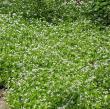
White blooms. Fragrant lance-shaped dark green leaves. Edible foliage. Tolerates deep shade. USDA 4-8
34 found, showing page 2 of 3










